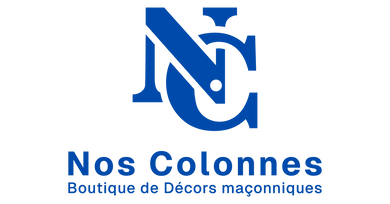What is Mark Masonry ?
Mark Masonry is an independent Order of Freemasonry, which is conferred on Master Masons but actually deepens the degree of Fellowcraft. Mark Masonry is relatively unknown on the European continent, whereas it is widely practised in Anglo-Saxon countries. Where does Mark Masonry come from ? When did it appear in modern speculative Freemasonry ? And what is the symbolic content of Mark Masonry ?
Operative origins of Mark Masonry
The use of marks long predates modern Freemasonry. Each Fellow Stonemason had a personal Mark, which he engraved on the stone he worked on. This system made it possible to measure the work done and set the wage fairly. An explicit trace of this practice can be found in the first "Shaw Statutes" (1598), which set out the practices of Masonry in Scotland : it is stipulated that the Warden had to record in a register the names and Marks of all the Masons in his Lodge.

This operative custom seems to have been forgotten by speculative Freemasonry, but there are two traces of it in the 1720s, at a time when the operative tradition (particularly Scottish) still coexisted with speculative Freemasonry.
The "Graham" MS of 1726 tells of a dispute over wages on the site of Solomon's Temple, which led Solomon to give the Masons a sign to distinguish them from ordinary labourers. This sign most probably refers to the Mark of the Fellowcraft. The "Graham" is an English document that bears traces of many Scottish influences.
Another Scottish witness also describes this practice. This is "A Mason's Confession", allegedly written by a repentant Scottish Mason in 1727, which was published in "The Scots Magazine" in 1755. Here it is stated that the new Apprentice had to choose a Mark which he should stamp on his tools so that he can recognise them ; this is almost certainly the same Mark that was engraved on the stones.
Oblivion and revival of the Mark theme
After the introduction of the Master degree centred on the legend of Hiram in the 1730s, the wages of the three degrees became associated with a Word rather than a sign or mark. The old Mark of the Fellows thus fell temporarily into oblivion. But it seems to have reappeared in England from the 1750s : a document dated 24 January 1756 mentions the Mark in an independent Lodge of Newcastle, which was in contact with the Grand Lodge of Scotland. And the first mention of the reception of Mark Masons and Mark Masters (which are the titles currently used in Mark Masonry) dates back to 1769, in a Chapter of the Royal Arch of Portsmouth.
From then on, it was within the context of the Royal Arch and no longer in the craft Lodges (except in Scotland) that the ancient operative tradition of the Mark would survive and develop. This was done by the so-called "Ancient" Freemasons, and not by the Grand Lodge of the "Moderns".
Mark Masonry within the Side Degrees
What place has Mark Masonry taken within the Side Degrees that have been developed in Anglo-Saxon Freemasonry?
Born in England from an ancient Scottish tradition, Mark Masonry was practised there as long as the Grand Lodge of the "Ancients" existed. But when the two Grand Lodges were merged in 1813 to form the United Grand Lodge of England, the articles of union made it clear that Freemasonry consisted exclusively of the three degrees of Entered Apprentice, Fellowcraft and Master Mason, including the Holy Royal Arch. There was no mention of Mark Masonry, which the "Moderns" had not accepted. It was therefore simply ignored by the United Grand Lodge of England until 1878, when the Grand Lodge of Mark Master Masons of England and Wales was created, which also governs the degree of Royal Ark Mariner.

In Scotland, which seems to be the origin of this tradition, there are two ways of accessing Mark Masonry : it may be conferred either within the Craft Lodge, as a complement to the Fellowcraft degree, or within a Chapter of the Royal Arch.
In Ireland, Mark Masonry is part of the Royal Arch Chapter, of which it is necessarily the first stage. In the United States, Canada and several other countries, Mark Masonry is also included in the Royal Arch Chapter, but this time within the broader structure of the York Rite.
Symbolic Content of Mark Masonry
Part of the initiation ceremony of Mark Masonry consists of asking the recipient to choose a Mark that characterises him. This is the operative aspect of this degree.
But there's a more spiritual dimension to Mark Masonry, revolving around a biblical verse: "The stone which the builders refused Is become the head stone of the corner" (Psalm 118:22), which the Gospels apply to Jesus himself. The Mark Masonry brings this image to life by using the theme of the Keystone : this stone with a particular shape has been cut, but rejected by the Overseers, who consider it unsuitable for the work. But then the Senior Warden noticed that the work had come to a standstill because the stone that had been cut to be the Keystone was missing. The famous stone that had been rejected was finally found and the Fellow who had cut it was congratulated.
The ritual of Mark Masonry is thus emblematic of Anglo-Saxon Side Degrees, which always combine operative Masonic tradition and biblical symbolism.
I WANT TO RECEIVE NEWS AND EXCLUSIVES!
Keep up to date with new blog posts, news and Nos Colonnes promotions.




























